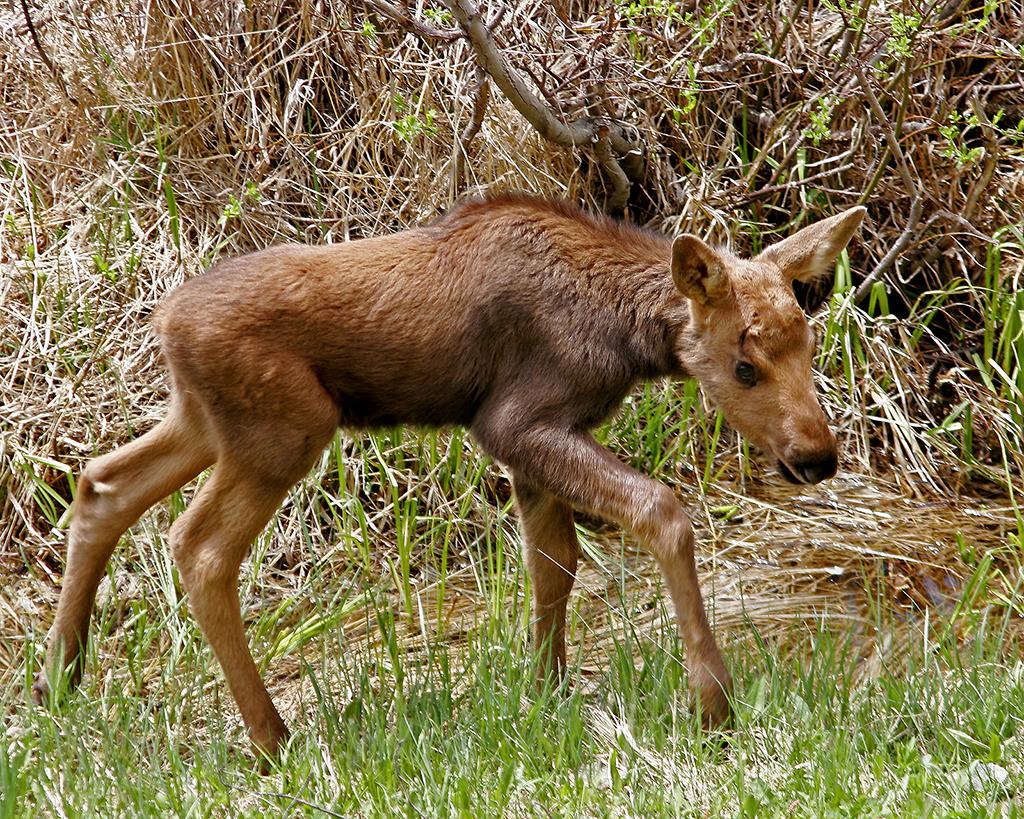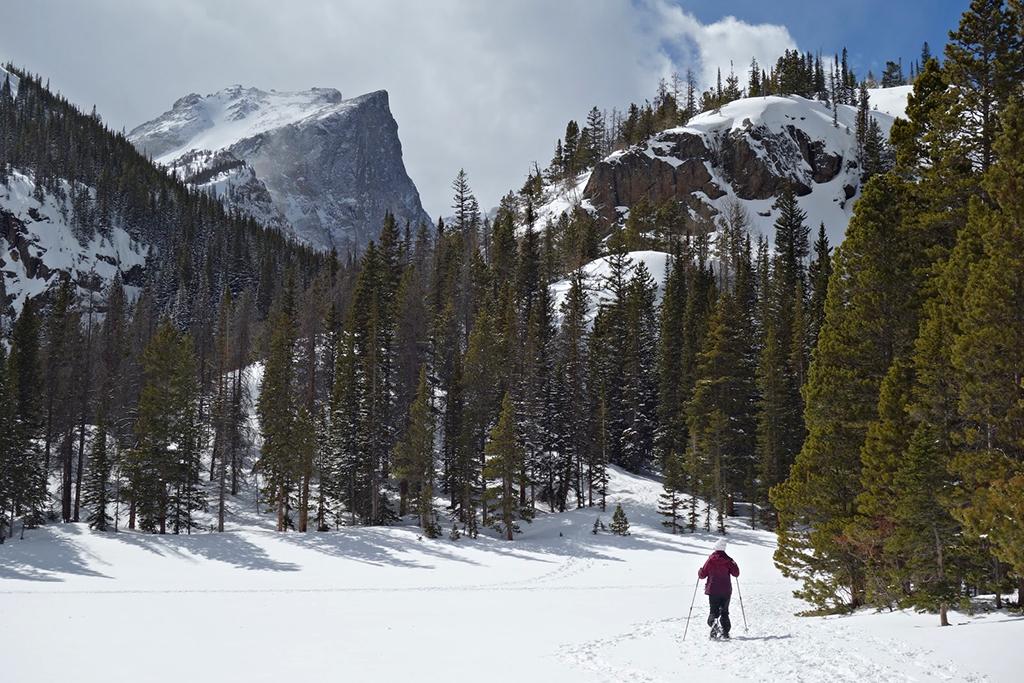Open year-round, Rocky Mountain National Park in Colorado enjoys four distinct seasons, each marked by notable changes to both temperature and scenery.
Spring

Ladybug on a wood lily, Rocky Mountain National Park / NPS-Jacob W. Frank via Flickr
April and May constitute springtime in the Rockies, but like other high-elevation parks, deep winter snows still cling to many areas. Trail Ridge Road, the main route through Rocky Mountain National Park, is closed until usually the last week of May. Temperatures range from the 50s Fahrenheit to below freezing. Despite these still-chilly temps, however, visitors will notice some of the park’s 900 species of wildflowers unfurling their petals. If you are searching for these colorful blossoms, keep in mind temperatures as well as bloom times vary depending upon the elevation. You might spy mountain ball cactus, Fremont geranium, heart-leaved arnica, bristly pricklypoppy, and pussytoes in the lower elevations, while the subalpine and alpine tundra areas won’t host wildflowers until sometime in June (at the earliest), lasting through August.
Summer

The summer months of June through August are when you might spot baby moose at Rocky Mountain National Park / NPS-Mike Vogel
June hails the start of summer, continuing through July and August. The park’s peak visitor season commences; Trail Ridge Road is open and Old Fall River Road follows suit around July 4 (give or take). You may spot baby moose or elk in early June. Colorful patches of wildflowers like Old Man of the Mountain, alpine forget-me-nots, Parry primrose, and dwarf clover speckle the alpine tundra, while Rocky Mountain columbine, aspen daisy, shooting star, fireweed, and miners-candle bloom in the lower-elevation montane meadows and forests. It’s normal to experience afternoon thunderstorms and high winds, with temperature variations of 20-30 degrees Fahrenheit.
Fall

During the fall, elk may be seen grazing the tundra as you drive Trail Ridge Road, Rocky Mountain National Park / Rebecca Latson
September through November usher cold temperatures in addition to a color change. “Leaf peepers” arrive to admire the cottonwood and quaking aspen trees ablaze with vibrant yellows, golds, oranges, and maybe even a little red. Autumn heralds the elk mating season and you might hear the bulls “bugling” their plaintive, wailing, “come hither” calls to attract the ladies. Explore the landscape from the paved ribbon of Trail Ridge Road one final time through the park before it closes in mid-October, and it’s possible you will spot herds of elk dotting the tundra. While the park’s lower elevations experience those falling temperatures, the higher elevations welcome snowfall.
Winter

Winter snows usher in a new set of outdoor activities for those hardy visitors wishing to visit Rocky Mountain National Park / NPS-Alex Gary Gareis
December through March in the park signals winter’s sub-zero temperatures and thick blankets of snow. It’s quiet. Most wildlife either migrated further south by now, or bedded down to endure winter’s chill. Those hardy visitors braving the season will discover plenty of solitude and very few (if any) crowds. Daily temperatures range from the 30s to 40s Fahrenheit with harsh arctic conditions pummeling the higher elevations. Sudden blizzards, high winds, and deep snowpack are common. Stick to the park’s eastern side (Estes Park area) for less snow and milder weather. The west side contends with more snow, less wind, and clear cold days during these months. Most high-country overnight trips require gear suitable for -35 degrees Fahrenheit or below. Skiing and snowshoeing conditions are best in January, February, and March.

Autumn aspen colors, Rocky Mountain National Park / Rebecca Latson





